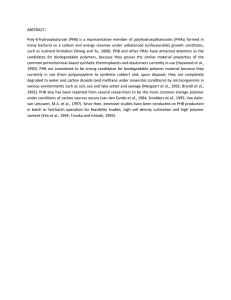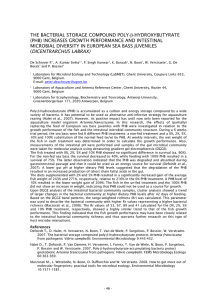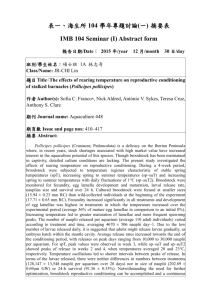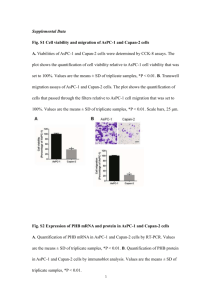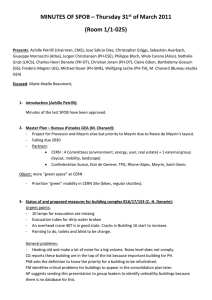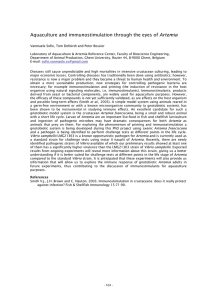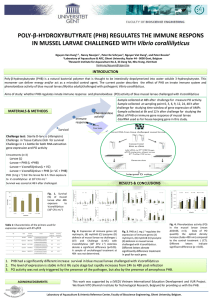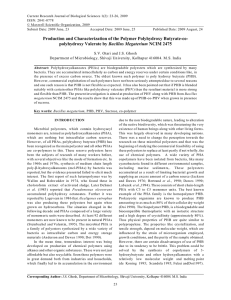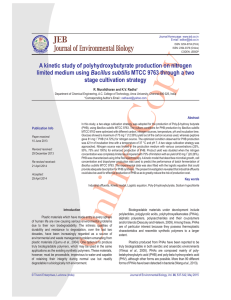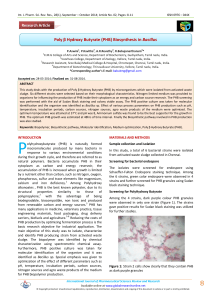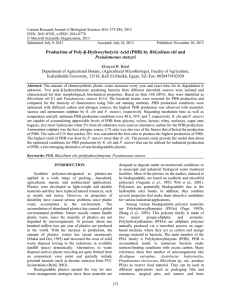Defoirdt Tom , Dirk Halet Patrick Sorgeloos
advertisement
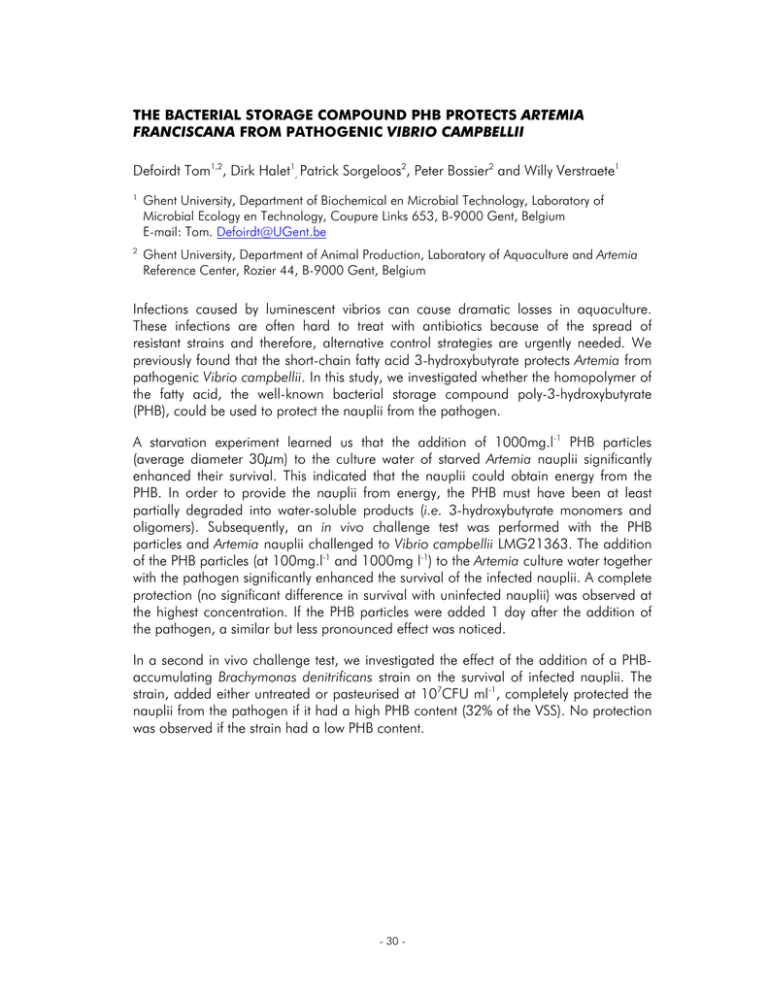
THE BACTERIAL STORAGE COMPOUND PHB PROTECTS ARTEMIA FRANCISCANA FROM PATHOGENIC VIBRIO CAMPBELLII Defoirdt Tom1,2, Dirk Halet1, Patrick Sorgeloos2, Peter Bossier2 and Willy Verstraete1 1 Ghent University, Department of Biochemical en Microbial Technology, Laboratory of Microbial Ecology en Technology, Coupure Links 653, B-9000 Gent, Belgium E-mail: Tom. Defoirdt@UGent.be 2 Ghent University, Department of Animal Production, Laboratory of Aquaculture and Artemia Reference Center, Rozier 44, B-9000 Gent, Belgium Infections caused by luminescent vibrios can cause dramatic losses in aquaculture. These infections are often hard to treat with antibiotics because of the spread of resistant strains and therefore, alternative control strategies are urgently needed. We previously found that the short-chain fatty acid 3-hydroxybutyrate protects Artemia from pathogenic Vibrio campbellii. In this study, we investigated whether the homopolymer of the fatty acid, the well-known bacterial storage compound poly-3-hydroxybutyrate (PHB), could be used to protect the nauplii from the pathogen. A starvation experiment learned us that the addition of 1000mg.l-1 PHB particles (average diameter 30μm) to the culture water of starved Artemia nauplii significantly enhanced their survival. This indicated that the nauplii could obtain energy from the PHB. In order to provide the nauplii from energy, the PHB must have been at least partially degraded into water-soluble products (i.e. 3-hydroxybutyrate monomers and oligomers). Subsequently, an in vivo challenge test was performed with the PHB particles and Artemia nauplii challenged to Vibrio campbellii LMG21363. The addition of the PHB particles (at 100mg.l-1 and 1000mg l-1) to the Artemia culture water together with the pathogen significantly enhanced the survival of the infected nauplii. A complete protection (no significant difference in survival with uninfected nauplii) was observed at the highest concentration. If the PHB particles were added 1 day after the addition of the pathogen, a similar but less pronounced effect was noticed. In a second in vivo challenge test, we investigated the effect of the addition of a PHBaccumulating Brachymonas denitrificans strain on the survival of infected nauplii. The strain, added either untreated or pasteurised at 107CFU ml-1, completely protected the nauplii from the pathogen if it had a high PHB content (32% of the VSS). No protection was observed if the strain had a low PHB content. - 30 -
